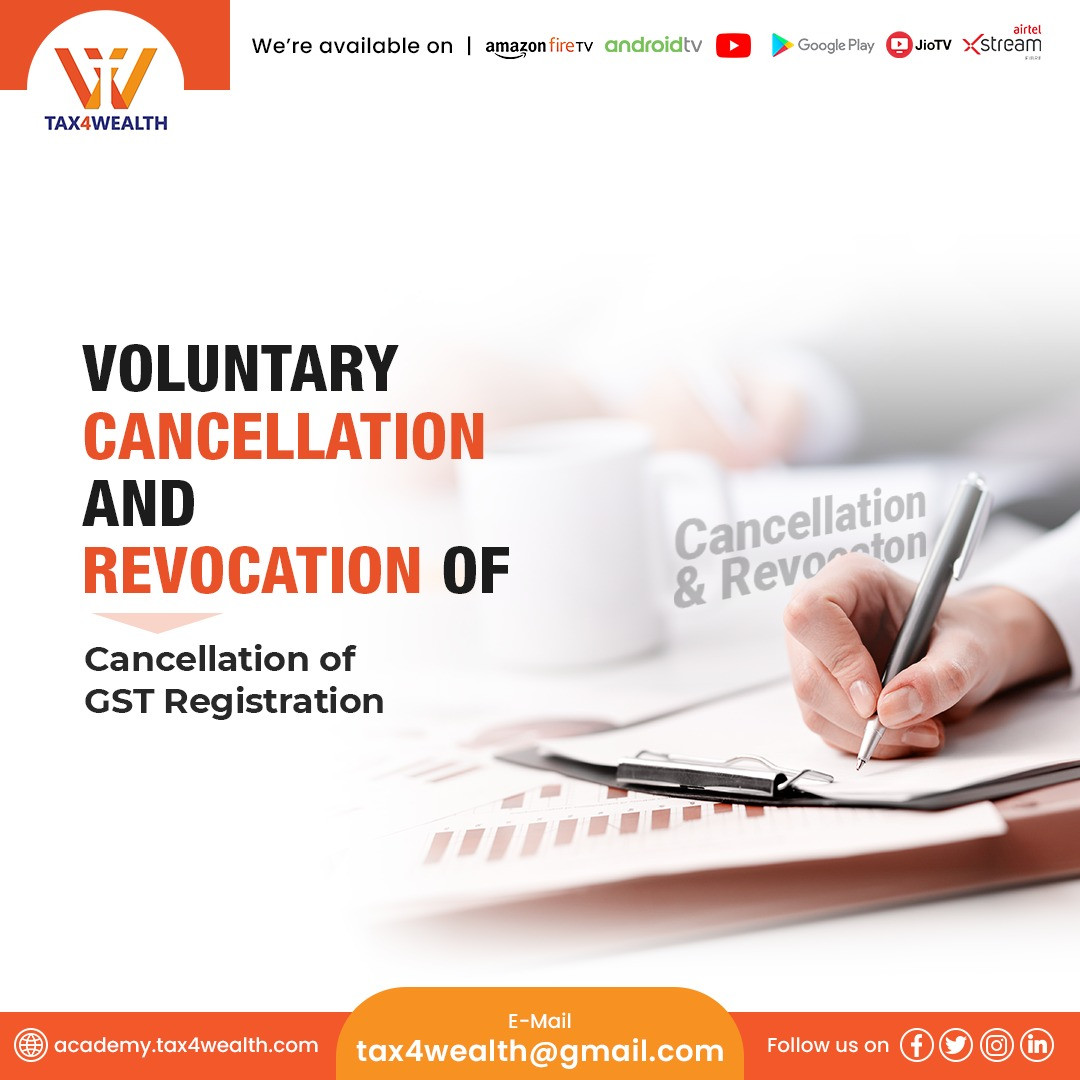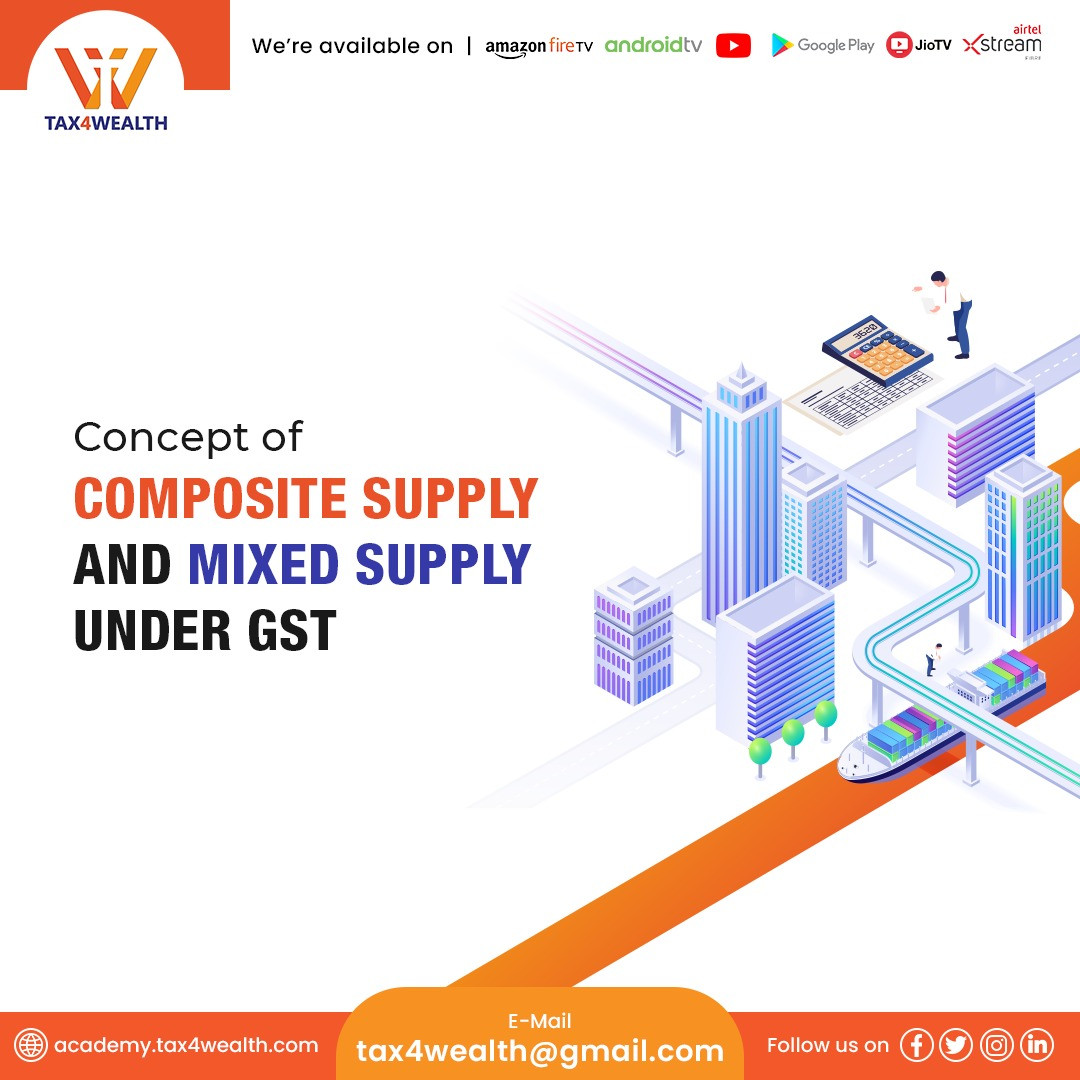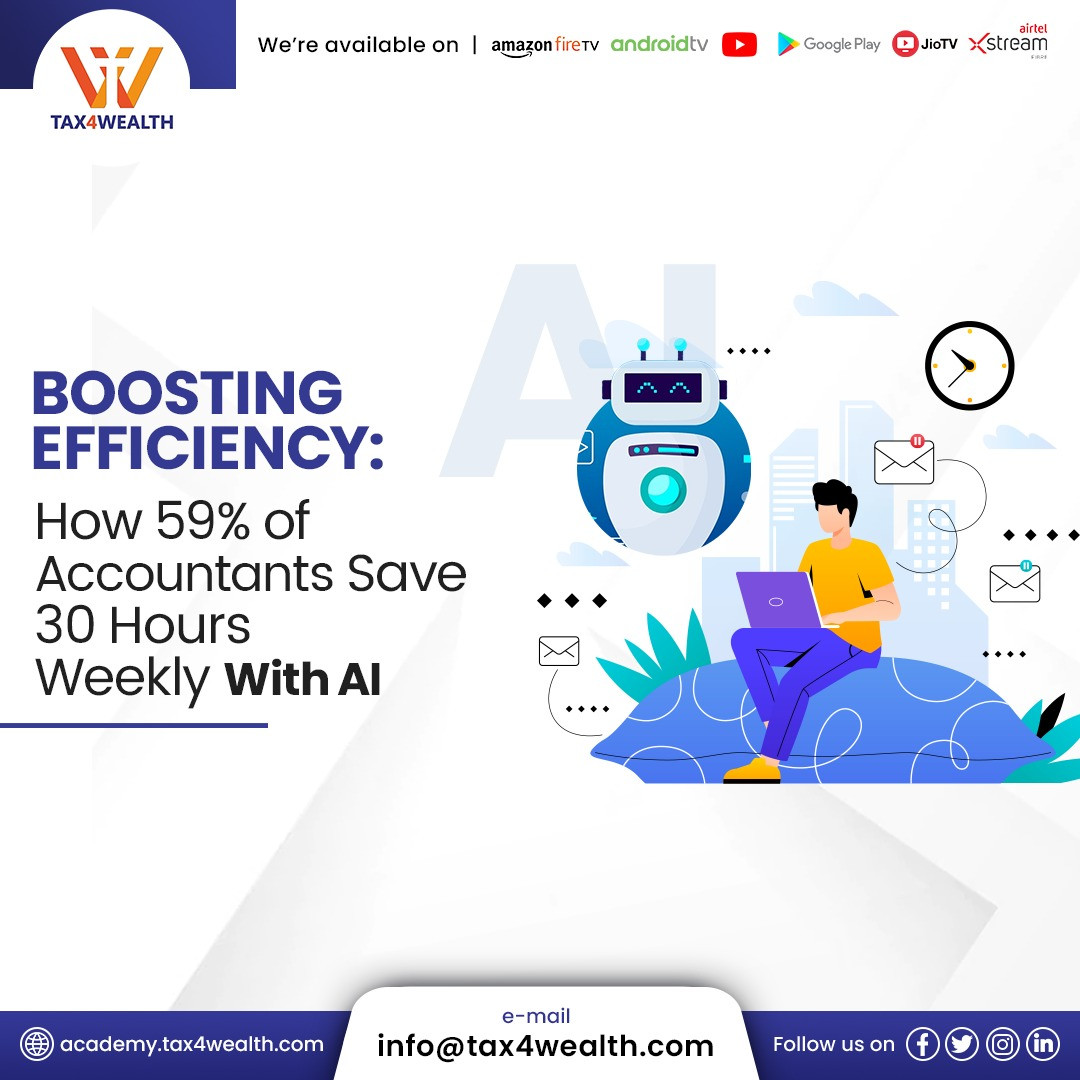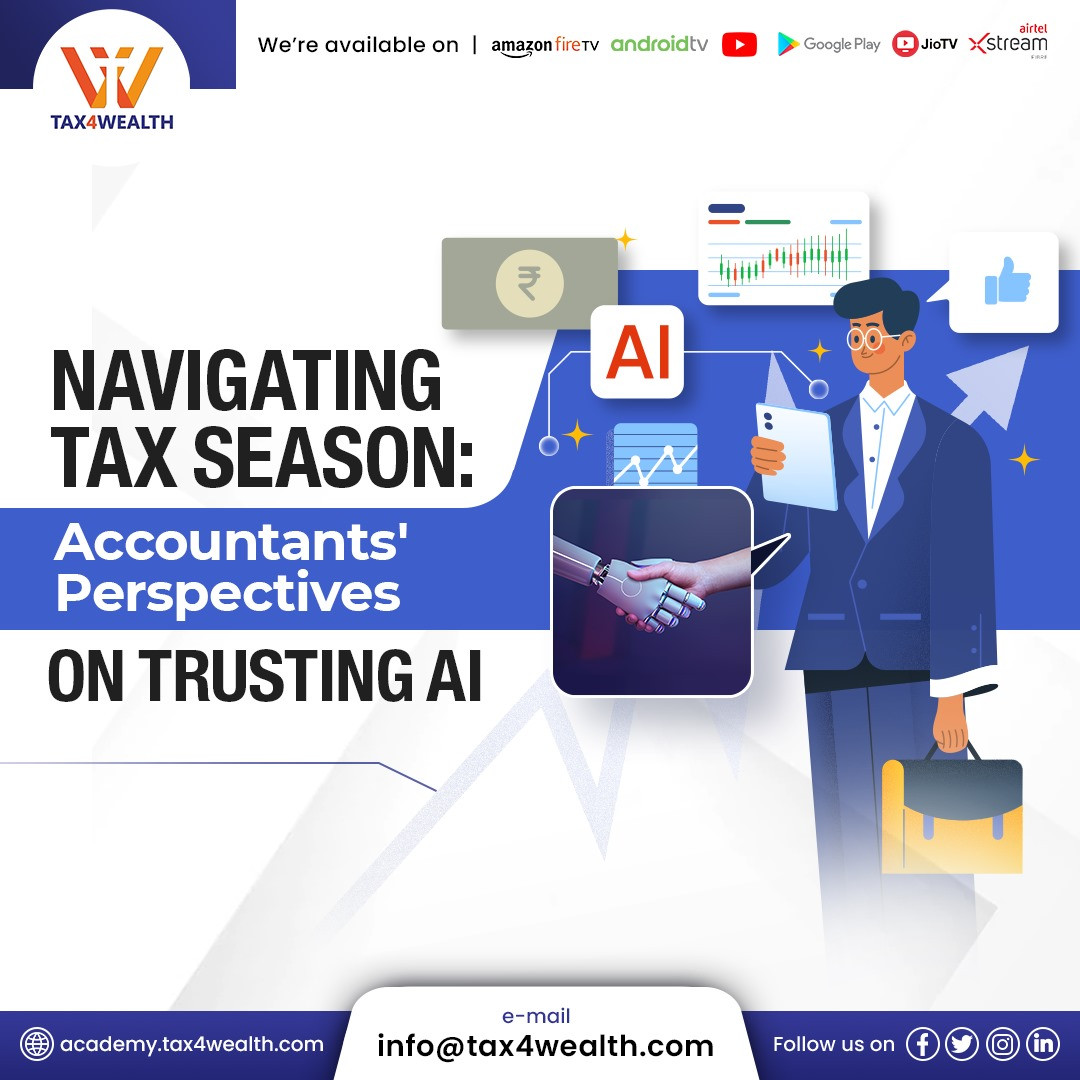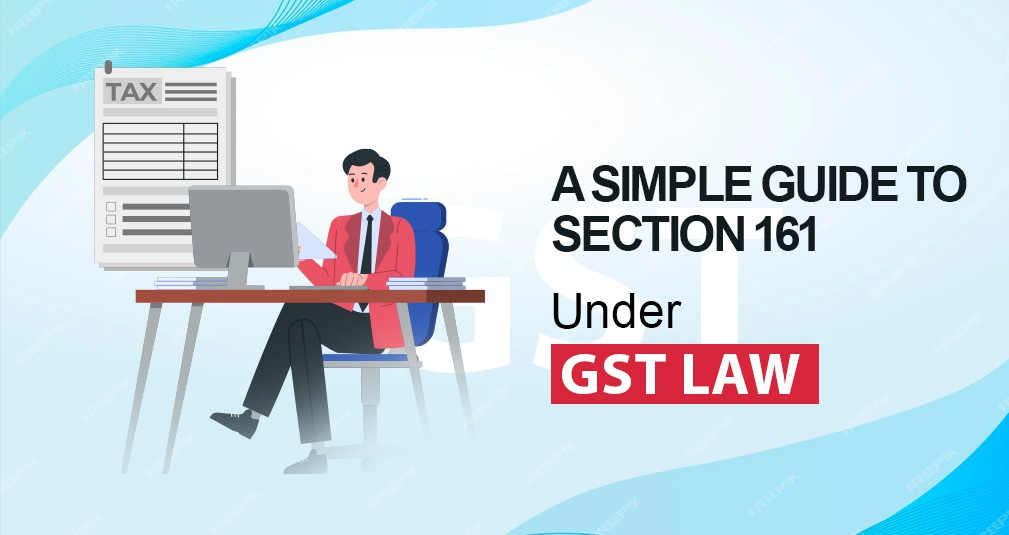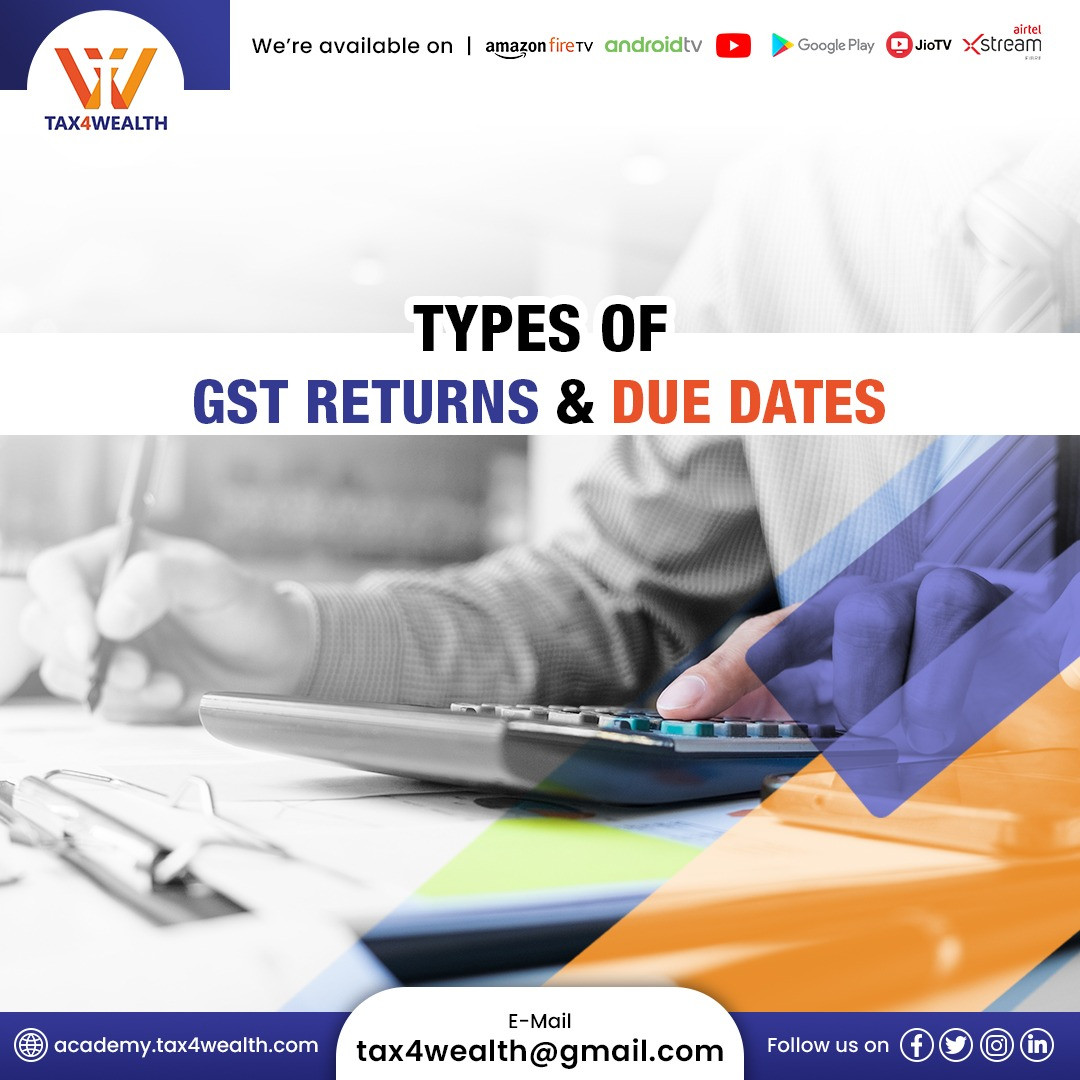
Types of GST Return and Due Dates
GSTR-1:-
GSTR-1 refers to a return that has to be furnished for reporting with details of all outward supplies of services and goods made. In simple words, it contains the debit notes, credit notes, and invoices that are raised in respect of a sales transaction for a specified tax period.
GSTR-1 has to be filled by the taxpayers who are registered under the provisions of the Goods and Service Tax Act. It also has to be filed by casual taxable persons. In case of any changes to the sales invoice made thereof pertaining to the last tax periods, the same must be reported in the return form of GSTR-1 by all the suppliers of goods and/or services
The Current GSTR-1 Filing Frequency is Mentioned Below:-
(a) In case a business has an annual turnover of Rs. 5 crores or more or it has not opted for the QRMP scheme, then the date of filling will be by the 11th of every month of the year.
(b) In case a business has opted for a QRMP scheme, then the date of filling will be by the 13th of every month following every quarter.
GSTR-2A:-
GSTR-2A is considered as view only GST return, in respect of the buyer or receiver of the goods and/or services supplied. The said return contains the details of inwards supplies for the goods and/or services. In simple words, purchases made during a tax period from a registered GST supplier must be mentioned in the return.
In GSTR-1 returns, the data is auto-generated based on the data filed by the supplier. Apart from that, the data filed by the QRMP taxpayer in the Invoice Furnishing Facility is also auto-generated. As GSTR-2 is a read-only view only return, no legal can be taken against it. However, a buyer can claim Input Tax Credit by referring GSTR-2 in each financial year around more than one tax period. If the invoice goes missing due to some reason, the buyer can also communicate with the supplier to upload it on a timely basis in GSTR-1.
Until August 2020, this return is used for claiming Input Tax Credit for every tax period frequently. Thereafter, the buyers are mostly referring to GSTR-2B to claim Input tax credit every year.
GSTR-2B:-
Like GSTR-2A, GSTR-2B is also a view only of SGT return in respect of the buyer or receiver of the goods and/or services supplied. This return is available on a monthly basis. It started in August 2020 containing the data of Input Tax Credit for a specific period whenever it was checked previously.
The details of Input Tax Credit will be covered from the date of filing GSTR-1 for the last month up to the final date of filing GSTR-1 for the present month. The availability of the return will be made on the 12th of each month, providing adequate time prior to the filing of GSTR-3B, where the declaration of Input Tax Credit is made already.
GSTR-2B also provides the details of the action that can be taken against each invoice reported including reversed, ineligible, referring to table numbers as mentioned in GSTR-3B, subject to reverse charge, etc.
GSTR-2:-
Currently, GSTR-2 return is a suspended GST return, which is applicable for all the registered suppliers under GST for reporting of inward supplies of goods and/or services with regard to purchases made during a particular tax period.
The details mentioned in the GSTR-2 return must be auto-populated from the GSTR-2A. However, it is to be noted that GSTR-2 can be edited. It is filed by normal taxpayers under GST. The filing of the same, however, has been withdrawn from the month of September 2017.
GSTR-3:-
Again, like GSTR-2, GSTR-3 is also a suspended GST return. This return is a monthly summary containing the summarized details of all inward suppliers made, input tax credit claimed, inward supplies received, taxes paid, and details of overall tax liability.
This return is also auto-generated based on the details of GSTR-1 and GSTR-2 returns filed earlier. It is filed by normal taxpayers under GST. The filing of the same, however, has been withdrawn from the month of September 2017.
GSTR-3B:-
GSTR-3B is a self-declaration return that must be filed on a monthly basis, furnishing the summarized details of all the outward supplies made, input tax credit claimed, taxes paid, and details of overall tax liability.
It is filed by normal taxpayers under GST. Before the filing of GSTR-3B, the details of sales and input tax credit must be reconciled along with GSTR-2B and GSTR-1 each tax period. GST reconciliation is an important aspect for the identification of mismatch in data which can lead to GST notices in the upcoming days or also it can lead to suspension of GST registration.
The present filing frequency of GSTR-3B has been mentioned below:
(a) Monthly, 20th of every month
In case a business has an aggregate annual turnover of more than Rs. 5 crores or it has not opted for the QRMP scheme.
(b) Quarterly
For ‘X’ category of States, 22nd of the month following the quarter. Quarterly, for ‘Y’ category of States, 24th of the month following the quarter
In case, the taxpayer or business has an annual turnover of Rs. 5 crores or below and is eligible to opt for the QRMP scheme.
GSTR-4:-
GSTR-4 refers to an annual return that has to be filed by the composite taxable taxpayers under GST, by 30 April of the year following the specified financial year. However, from the financial year 2019-20 onwards, it was replaced by GSTR-9A. Before the Financial year 2019-20, GSTR-4 was required to file on a quarterly basis. Following this, a simple challan named CMP-08 has to be filed by the 18th of every month succeeding each quarter replacing the same.
The composition scheme is meant for the taxpayers who are dealing with goods and/or services having an annual turnover up to Rs. 15 crores. A fixed-rate of taxes on the annual turnover is declared. Thereafter, the service providers can avail of the scheme under CGST as notified under Notification 2/2019 dated 7 March 2019, in case the annual turnover is up to Rs.50 lakh.
GSTR-5:-
GSTR-5 refers to the return that has to be filed by non-resident foreign taxpayers, registered under GST and carrying out their business and making transactions in India. GSTR-5 contains the details of inward supplies made, credit or debit notes, outward supplies made, taxes paid, overall tax liability, etc. It has to be filed by the 20th of every month under the GSTIN obtained by a taxpayer registered under GST in India.
GSTR-5A:-
GSTR-5A is a summary of return with regard to reporting of outward taxable supplies and tax payable by the Online Information and Database Access or Retrieval Services (OIDAR) provider under GST. For filling out GSTR-5A, the due date is the 20th of every month.
GSTR-6:-
GSTR-6 is termed a GST return that has to be filed on a monthly basis by an Input Service Distributor (ISD). It contains the details of input tax credit distributed and received by ISD. Apart from that it also contains the details of documents distributed and issued in respect of input tax credit. For filling of GSTR-6, the due date is the 13th of every month.
GSTR-7:-
GSTR-7 refers to a monthly return that has to be filed by a person who deducts TDS (Tax deducted at source) under GST. It contains the details of the total amount of TDS deducted, the liability of TDS payable or paid, TDS refund claimed if any. For filling of GSTR-7, the due date is the 10th of every month.
GSTR-8:-
GSTR-8 refers to a monthly return that has to be filed by e-commerce operators that are registered under the GST. These e-commerce operators are required to TCS (Tax collected at Source). This return contains the details of all supplies that are made with the help of e-commerce portals and TCS collected accordingly for the same. For filling out GSTR-8, the due date is the 10th of every month.
GSTR-9:-
GSTR-9 refers to the annual return that has to be filed by taxpayers registered under GST. According to the provisions of GST law, the due date for filing GSTR-9 is by 31st December of the year following the next financial year. This return contains the details of inward supplies received, outward supplies made during a particular financial year under various heads of taxes including Central Goods and Service Tax, State Goods and Service Tax, and Inter-State Goods and Service Tax, a summary of supplies value as reported under HSN codes, the details of taxes paid or payable, etc.
This return is considered as a consolidation of all the monthly or quarterly returns such as GSTR-1, GSTR-2A, GSTR-3B filed during a particular financial year. GSTR-9 is meant to be filed by all taxpayers registered under GST. However, it is to be noted that there are some exceptions in this regard. As per the provisions under Section 51 of the Central Goods and Service Tax Act (CGST), as a taxpayer who has opted for a composition scheme, input service distributors, casual taxable persons, non-resident taxable persons, and TDS paying persons are exempted from this.
Please note that according to the CGST notification no. 47/2019, which was later, amended. The taxpayer having an annual aggregate turnover of less than Rs. 2 crores is optional to file the annual return for the financial year 2017-18, 2018-19, and 2019-20.
GSTR-9A:-
Currently, GSTR-9A is an annual return that is suspended. It was required to be filed by taxpayers who opted for the composition scheme earlier. It was a consolidation of all the quarterly returns filed earlier during a particular financial year. The return was scrapped ever since GSTR-4A was introduced in the financial year 2019-20. Before that, the filling of GSTR-9A was meant for composition taxpayers which were ultimately waived off in the financial year 2017-18 and 2018-19.
Learn more; click here : GST Return Filing Course With Practical Examples.
GSTR-9C:-
GSTR-9C refers to a reconciliation statement that has to be filed by all the taxpayers under GST, provided their turnover exceeds Rs. 2 crores in a particular financial year as per the provisions of GST law. This return has to be certified by a Cost and Management Accountant or a Charted Accountant after conducting a detailed GST audit of the books of account with comparisons of figures mentioned in GSTR-9.
The deadline for filing of the GSTR-9C is the same as that of the due date prescribed for GSTR-9 which is 31st December of the year following the particular financial year.
It is to be noted that GSTR-9C has to be filed for every GSTIN, Thus, it is obvious that one PAN may have multiple filings for the GSTR-9C form.
According to the outcome of Union Budget 2021, the audit requirement for GST by professionals including Charted Accountant and Cost and Management Accountant has been removed under the Goods and Service Tax law. Accordingly, Sections 35 and Section 44 were amended but the same is yet to be notified by the Central Board of Indirect Taxes. Considering the same, GSTR-9 must be filed by the taxpayers on the GST portal itself based on the self-declaration by entirely removing the need for GSTR-9C. However, the application date and financial year of the aforesaid removal are yet to be announced by the Government of India.
Please note according to the notification of CBIC under 16/2020, which was later amended. The taxpayer has an annual aggregate turnover of more than Rs. 5 crores for the financial year and 2019-20 waived off for GSTR-9C.
GSTR-10:-
GSTR-10 must be filed by a taxable person who has surrendered or whose registration has been canceled. The aforesaid return is also known as a final return and it must be filed within 3 months from the date of cancellation order or cancellation, whichever is earlier.
GSTR-11:-
GSTR-11 is a GST return which has to be filed in by the taxpayer who has been issued a Unique Identity Number (UIN) under GST with regard to claim a refund for the goods and/or services purchased by them. Unique Identity Number refers to a classification made for the embassies that are not liable to pay taxes in India, for the aforesaid purposes to get a refund of taxes. GSTR-11 contains the details of refund claimed and inward supplies received.
Late filing of GST Returns:-
Under the GST regime, the filing of returns is compulsory. Although there is no transaction, a person registered under GST must file a NIL return. The following are some of the important points which one must keep in mind;
• A person registered under GST cannot file a return in case he or she has not filed the previous return, whether it may be monthly or quarterly.
• Thus, the late filing of GST returns can have a negative impact which can lead to heavy penalties and fines.
• The late filing fee of the GSTR-1, will ultimately be shown in the liability ledger of GSTR-3B which must be filed immediately after knowing such delay.
Related News
No comments yet, Be the first to comment.



